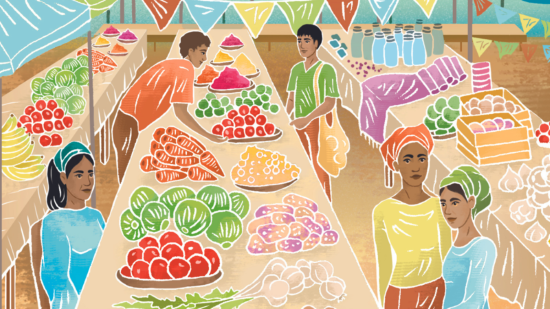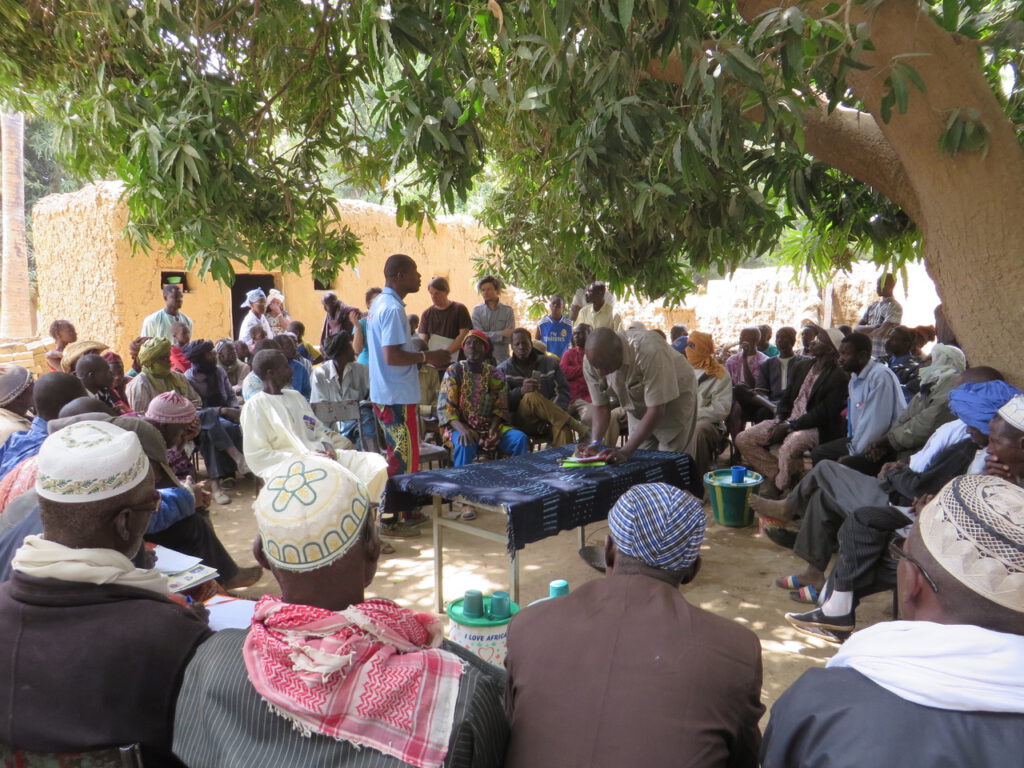Article from Altreconomia : I piccoli produttori nutrono ancora il Pianeta, nonostante la Fao, di Marta Facchini — 15 Febbraio 2022
According to the United Nations agency, it is large agricultural companies that feed the world’s population. In reality, it is the small producers who feed 70% of the people, protecting biodiversity and producing quality food. Where giants dominate, on the other hand, crops are mainly used for livestock and biofuels.
Small producers still feed the world, but the UN Food and Agriculture Agency (FAO) has stopped recognising this. According to the UN agency, small farmers contribute to feeding just a third of the world’s population, while the remainder is fed by large farms, which are considered more efficient and productive. This thesis, contained in the report “Which farms feed the world and has farmland become more concentrated?” published in 2021, has been criticised by eight organisations working on sustainability, agriculture and food sovereignty.
In a letter sent to the FAO Directorate-General on 1 February 2022, the organisations (including Grain and the Alliance for Food Sovereignty in Africa) challenged the report’s claims, pointing out that recent studies on the subject, which go in exactly the opposite direction, are not being taken into account and that the FAO itself is contradicting its previous statements on the subject. In their open letter, the organisations ask for a critical reflection on the methodology used and to reaffirm that small producers are the primary source of food for 70% of the world’s population, as previously recognised by the United Nations itself.
According to the organisations, the report contains a number of important critical points. Firstly, there is a change in the definition of ‘family farmer’ compared to the one adopted by the FAO as part of the ‘UN Decade for Family Agriculture and Global Plan of Action’, launched in 2019 together with the International Fund for Agricultural Development (Ifad). The new survey excludes artisanal fishers, pastoralists, hunters and those involved in food production in urban settings. In addition, the report defines – in an “arbitrary” way, the organisations underline – that a “small farm” should be understood as a property of less than two hectares, thus negating the FAO’s assumption of 2018. On that occasion, the Agency had refused to adopt a universally valid land area parameter to describe small farms, stressing the need to consider the specific variables offered by individual territorial contexts. “The document is an awkward departure from previous FAO research and positions,” the signatories of the open letter highlight. “It feeds a narrative aimed at downplaying the importance and effectiveness of farmers’ production.”
One critical point is precisely the level of productivity that can or cannot be achieved. Numerous studies have shown that small-scale farmers not only produce more per hectare of land,” the organisations point out, “but also protect biodiversity, differentiate crops and produce goods with a higher nutritional quality and create more jobs. And that’s not all. Unlike small farmers, large companies work mainly to obtain agricultural raw materials, ‘soft commodities’ destined for international markets and not for direct consumption by the population. These are, in particular, cotton and rubber, crops used for livestock and industrial biofuels. But it is also about the quality of food: large companies supply goods – such as palm oil, soya, sugar – used for food that is not always nutritionally healthy.
According to a report by the Institute on the Environment at the University of Minnesota in the US, 55% of calories from agricultural products worldwide are used to feed people directly, 36% to feed livestock and the remaining 9% to produce biofuels. The US, where farms occupy a prominent position, offers a significant cross-section: only 27% of crop calories are used to feed people and 67% to feed livestock. In the country, 40% of the main crop, maize, is used in the production of biofuels for the car market. In contrast, in India, where the landscape is dominated by small-scale producers, almost 90% of the calories produced are used directly by the population.
The different purpose of the crops is also observed in the territories. Most of the crops grown for livestock and biofuels are produced in areas where large farms dominate, such as the United States, Europe and some large exporting countries in Latin America such as Brazil. In contrast, crops produced for food are rooted in Africa, India, parts of South-East Asia and the low-income countries of Latin America where small-scale producers have the largest presence. There is a clear conclusion: large farms do not feed the world,” the organisations write, “but instead line the pockets of those who invest and trade in raw materials, feed cows and cars, and feed the junk food industry.














